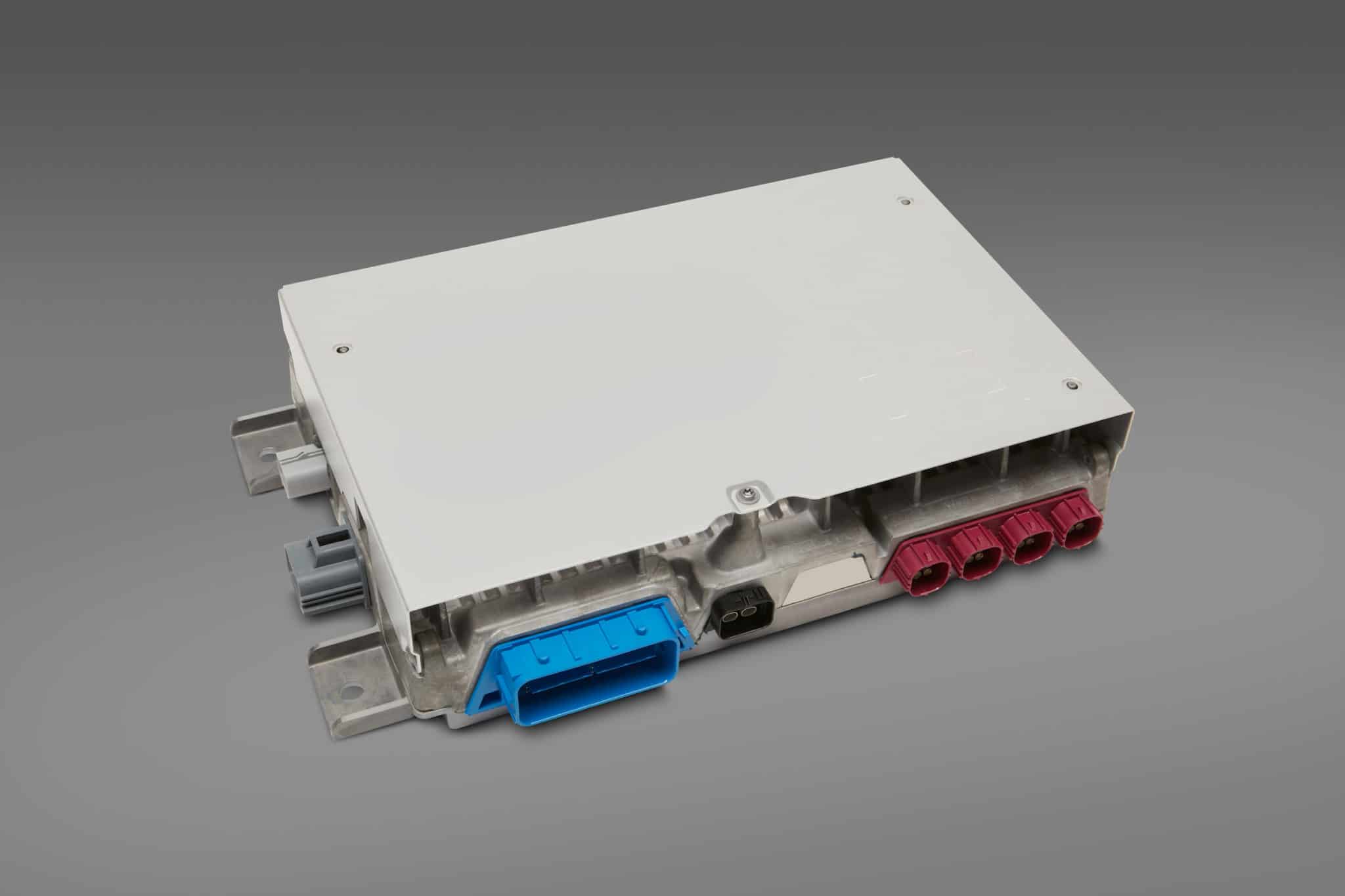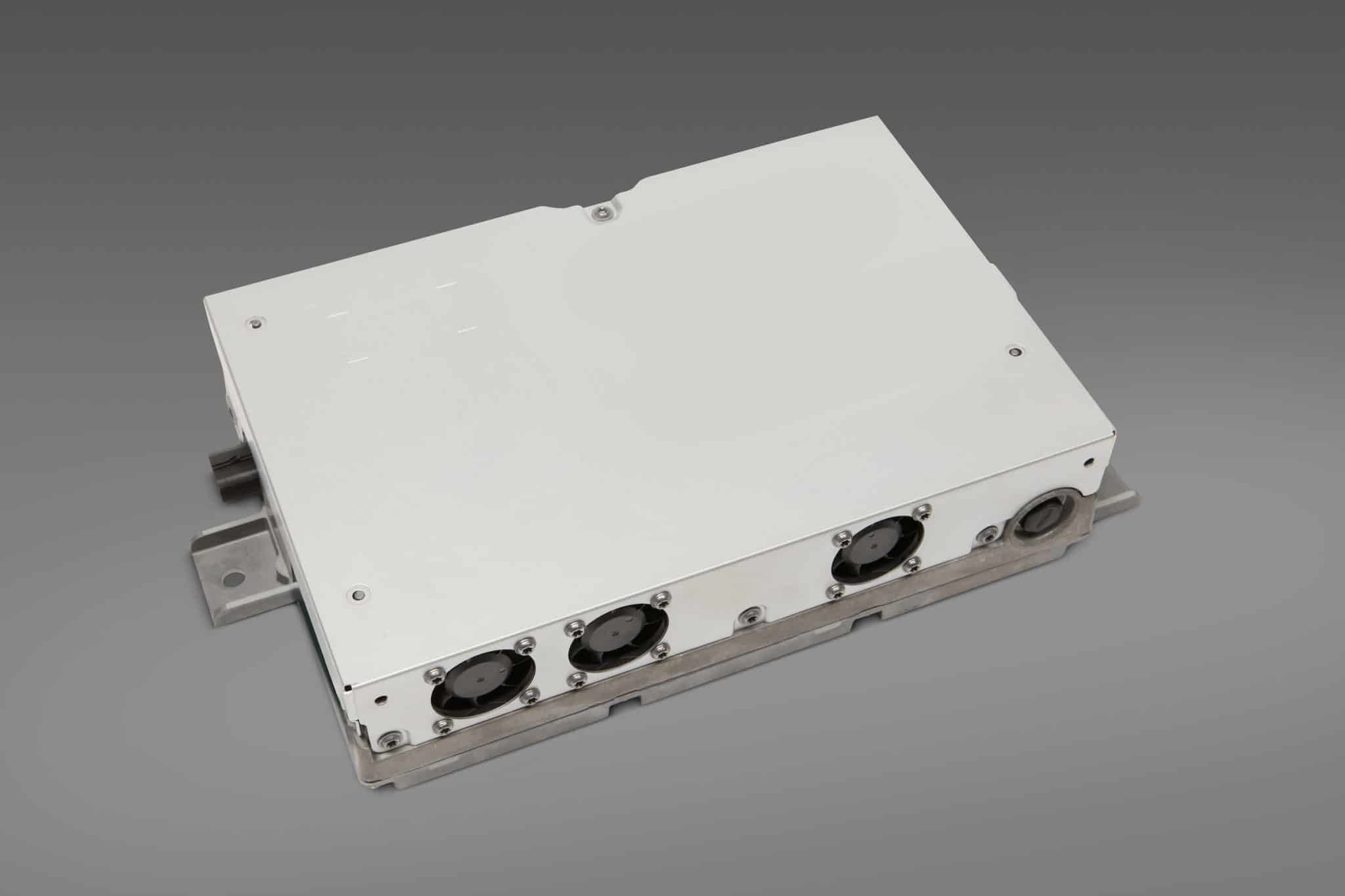Our editor Carl Anthony explains how Ultra Crusie works in the short podcast above, including what sensor technologies it employs to generate a 360-degree view around the vehicle.
General Motors has announced that Ultra Cruise, its latest hands-free driver-assist system, will be powered by “Ultra Cruise compute,” a scalable compute architecture. The new architecture features system-on-chips (SoC) developed by Qualcomm Technologies, Inc. GM will be the first manufacturer to use Qualcomm Technologies’ Snapdragon Ride Platform for ADAS applications. Snapdragon Ride features a five-nanometer Snapdragon SA8540P SoC and SA9000P artificial intelligence accelerator.
Ultra Cruise Compute In-Depth
Ultra Cruise compute is about the size of two laptops stacked together (photos below) and will support GM’s latest ADAS technologies, including perception, planning, localization, and mapping. To ensure a robust and predictable system with minimal latency, the automaker integrated Ultra Cruise’s software on an optimal hardware design, overlaying cameras, radar, and LiDAR. Two Snapdragon SA8540P SoCs and one SA9000P AI accelerator are also at the heart of the Ultra Cruise compute architecture. As described by GM, this delivers essential low-latency control functions on 16-core CPUs and high-performance AI compute of more than 300 Tera Operations Per Second for the cameras, radar, and LiDAR processing.
“Despite its relatively small size, Ultra Cruise’s compute will have the processing capability of several hundred personal computers,” explained Ken Morris, GM Vice President of Electric, Autonomous and Fuel Cell Vehicle Programs. “It will take qualities that have distinguished GM’s advanced driver assist systems since 2017 to the next level with door-to-door hands-free driving.”
According to GM, Ultra Cruise will enable hands-free driving 95 percent of the time and eventually be available on every paved road in the U.S. and Canada. Not to be confused with Super Cruise, Ultra Cruise is the next step for GM regarding hands-free driver-assist features, though it is not an outright replacement. Ultra Cruise will be available starting in 2023 on select Cadillac vehicles, GM said.


Engineering & Design
GM minimized complexity within the compute architecture, opting for an air-cooled design versus a liquid-cooled system that would have required thermal cooling lines. GM also notes that Ultra Cruise can support over-the-air software updates enabled through the Ultifi software platform and the automaker’s Vehicle Intelligence Platform electrical architecture. Ultra Cruise compute also includes an Infineon Aurix TC397 processor for system safety integrity (the Aurix TC397 is categorized ASIL-D).
Ultra Cruise was developed in-house at GM engineering facilities in Israel, the United States, Ireland, and Canada.
“We are very proud of our collaboration with General Motors on one of the industry’s first uses of our Snapdragon SoCs in an automated driving system,” said Nakul Duggal, Qualcomm Technologies, Inc. Senior Vice President and General Manager, Automotive. “Ultra Cruise powered by Snapdragon Ride on Cadillac vehicles will be an experiential and technological leap forward for the industry.”


